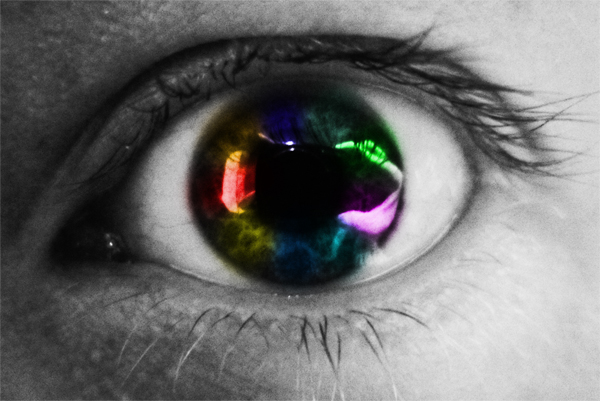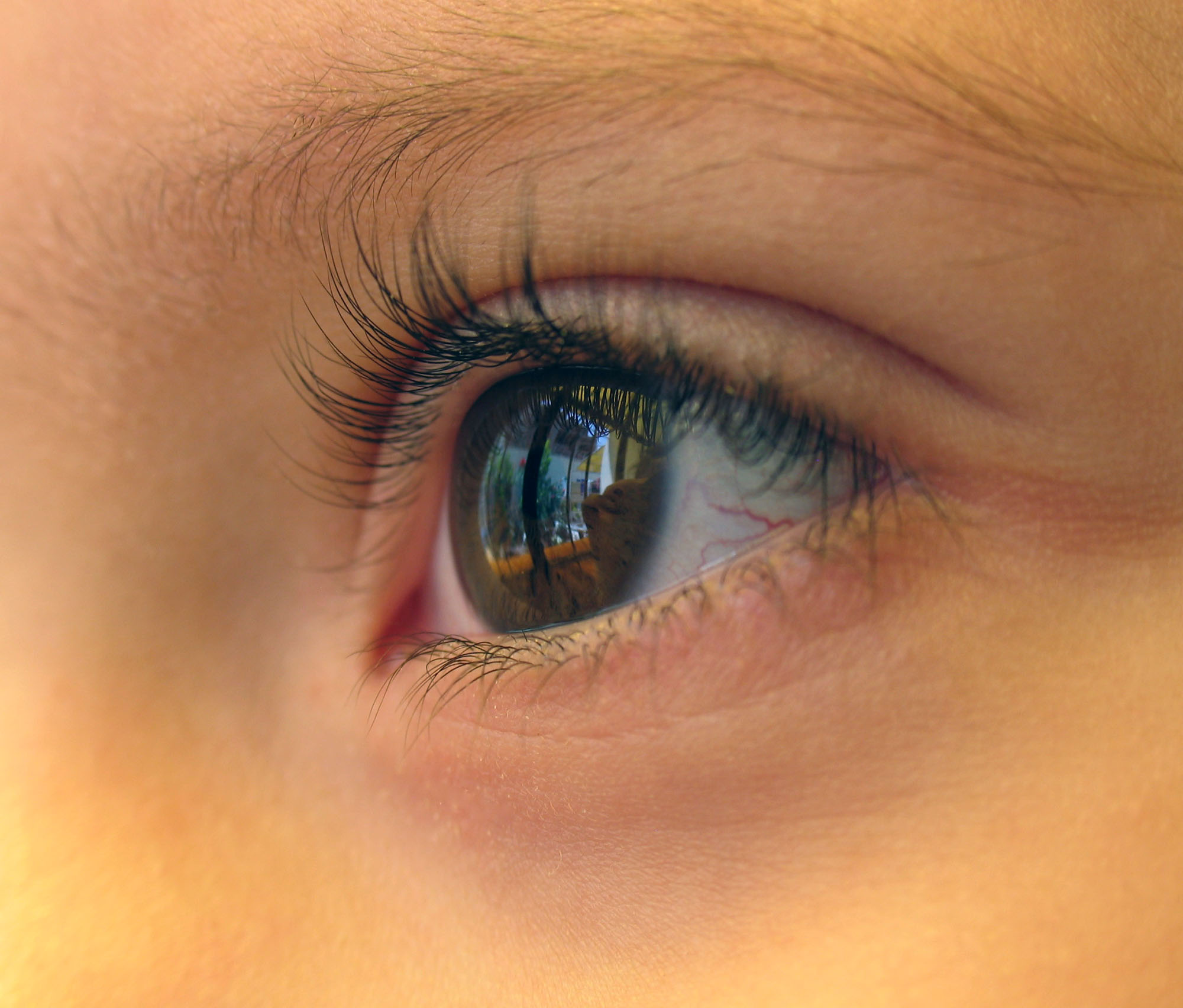 I asked my Facebook friends what my blog post should cover today. They gave me a list of very creative subjects that I will try to cover in the coming months. The winning suggestion for today is “why do my eyes change color depending on my mood?” In a simple Google search, it is apparent that many people have witnessed the phenomenon of their eyes changing color depending on their moods.There seem to be many explanations for this from light scattering to hormonal influences to psychic powers. What’s the real story? To get to the bottom of this, let’s take a closer look at how eye color is determined in the first place.
I asked my Facebook friends what my blog post should cover today. They gave me a list of very creative subjects that I will try to cover in the coming months. The winning suggestion for today is “why do my eyes change color depending on my mood?” In a simple Google search, it is apparent that many people have witnessed the phenomenon of their eyes changing color depending on their moods.There seem to be many explanations for this from light scattering to hormonal influences to psychic powers. What’s the real story? To get to the bottom of this, let’s take a closer look at how eye color is determined in the first place.
Eye color, similar to hair and skin color, is a complicated phenotype. Eye color is determined by a combination of different DNA sequences on different genes, sometimes by a single DNA base change known as a single nucleotide polymorphism or SNP. Two genes that play major roles in eye color can be found on chromosome 15 and are called OCA2 and HERC2. The colored part of the eye is called the iris and color is largely dependent on the amount of pigment present. Brown eyes arise from a gene combination that is similar to a dominant trait and are thought to be the original eye color in the world.
 Researchers have shown over the years that OCA2 contributes to eye color in a major way by determining the amount of the pigment melanin that is produced. In 2008, a paper in Human Genetics1 revealed that a mutation in the HERC2 gene, which interacts closely with OCA2 revealed that individuals with blue eyes can be traced to a common ancestor. Whether a person has light or dark eyes is closely tied to the sequence of two SNPs in OCA2 and HERC2! (I’ve had the exciting privilege to actually demonstrate this experimentally.)
Researchers have shown over the years that OCA2 contributes to eye color in a major way by determining the amount of the pigment melanin that is produced. In 2008, a paper in Human Genetics1 revealed that a mutation in the HERC2 gene, which interacts closely with OCA2 revealed that individuals with blue eyes can be traced to a common ancestor. Whether a person has light or dark eyes is closely tied to the sequence of two SNPs in OCA2 and HERC2! (I’ve had the exciting privilege to actually demonstrate this experimentally.)
Wikipedia2 does a nice job of describing the pigments in the iris and how they affect eye color. Brown eyes have quite a bit of melanin in them and therefore absorb most wavelengths of light giving rise to a dark color. Blue eyes, on the other hand, have black or brown epithelium covered by small amounts of melanin. Longer wavelengths of light are absorbed by the dark epithelium, but shorter wavelengths of light are reflected and undergo what’s known as Rayleigh Scattering, the same principle that leads to the blue color in the sky. There are not actually any blue pigments in the iris of a blue eye!
In addition to melanin, green eyes also contain the pigment lipochrome, which is an amber color. The low concentration of melanin combined with Rayleigh scattering create the green color (i.e. amber = yellow + blue makes green!). Hazel eyes are complex and contain a moderate amount of melanin in the anterior border layer of the iris. Hazel eye color is often found in populations where brown, green, and blue-eyed people are intermixed!
Since eye color is a polygenic phenotype, meaning color depends on a certain combination of several genes, there are many variations within each of the color classes listed above. These properties combined with an individual’s perception of color may give rise to differences in opinion when it comes to naming eye color. Cut your significant other some slack when s/he fails to call your eyes the same color as you think they are (unless you have blue eyes and s/he says brown. That’s just not paying attention.)
So, back to the original question: why do people’s eyes change color based on their moods? The answer is most likely that they don’t physically change color, at least on the time scale of emotional changes (which is faster for some than others). Since most eye colors are very dependent on light scattering, changes in light exposure to the iris of the eye could affect the apparent color. Mood changes often lead to changes in facial expression, which can mean, for instance, when you are angry, the furrowed brow could lead to somewhat squinty eyes, letting in a smaller amount of light. When you are happy or in love (which is often blamed for changing eye color), the eyes may be more wide open, allowing more light in. Moods also change dilation of the pupil, which constricts or expands the iris. Alterations in hormone release could also affect the dilation of the pupils, which will lead to an apparent change in eye color. Of course any tears produced as a consequence of any of the above emotions mean a much more complex light scattering effect, which could also change apparent eye color.
References
- Eiberg, et al. (2008) Blue eye color in humans may be caused by a perfectly associated founder mutation in a regulatory element located within the HERC2 gene inhibiting OCA2 expression. Human Genetics 123(2):177-187.
- Eye color. (2013, May 31). In Wikipedia, The Free Encyclopedia. Retrieved 14:57, June 7, 2013, from http://en.wikipedia.org/w/index.php?title=Eye_color&oldid=557745494
Karen Reece
Latest posts by Karen Reece (see all)
- She’s Going Soft! – A commentary on “hard” and “soft” sciences - July 30, 2014
- What are you so worried about? - June 9, 2014
- 5 Signs You’re Ready to Earn that Ph.D. - March 7, 2014

An interesting attempt to join many pieces….!
Thank u!
Now imagine you had a white area with a huge amount of tiny little brown spots on it.
It would appear brown. Now move a glass pane in front of it and the saturation will disappear, making
it appear grey. Same thing in the eye. The iris consists of white parts and a huge amount of invisibly tiny little
black or brown freckles and lines. And the freckles and lines usually have the higher brown saturation.
When the cornea is in front, it will make the dark parts pale, changing the visible color towards grey.
This is why eyes appear less blue in the daylight. The dark components are blurred together with the
white ones and the cornea or the mirror erases their brown saturation. Besides, the mirror doesn’t reflect the real light spectrum precisely. And of course, visual accomodation towards the skin color as a contrast will make the eyes always appear more blue than they really are. Sometimes in digital photographs, even the pupil appears blue. Digital cameras generally create distorted pictures of reality, let alone because of the JPEG compression and all the firmware postprocessing which is a chaotic mystery. Of course the pictures look nice, but objectively testing their optic qualities just ain’t possible.
Will this all explains it scientifically but how would you explain how a mood ring works. I always thought it was the same kind of concept, but he way you explain how or when moody eyes change colors wouldn’t work in the same concept for the mood ring or does it?
Mood rings work based on temperature changes. Here is an article with a fun experiment you can try https://www.refinery29.com/en-us/mood-ring-accuracy-experiment#:~:text=Most%20mood%20rings%20work%20in,a%20different%20emotion%20or%20feeling.
uhm, i have a question..is it possible to make my eye color change? without contact lenses?